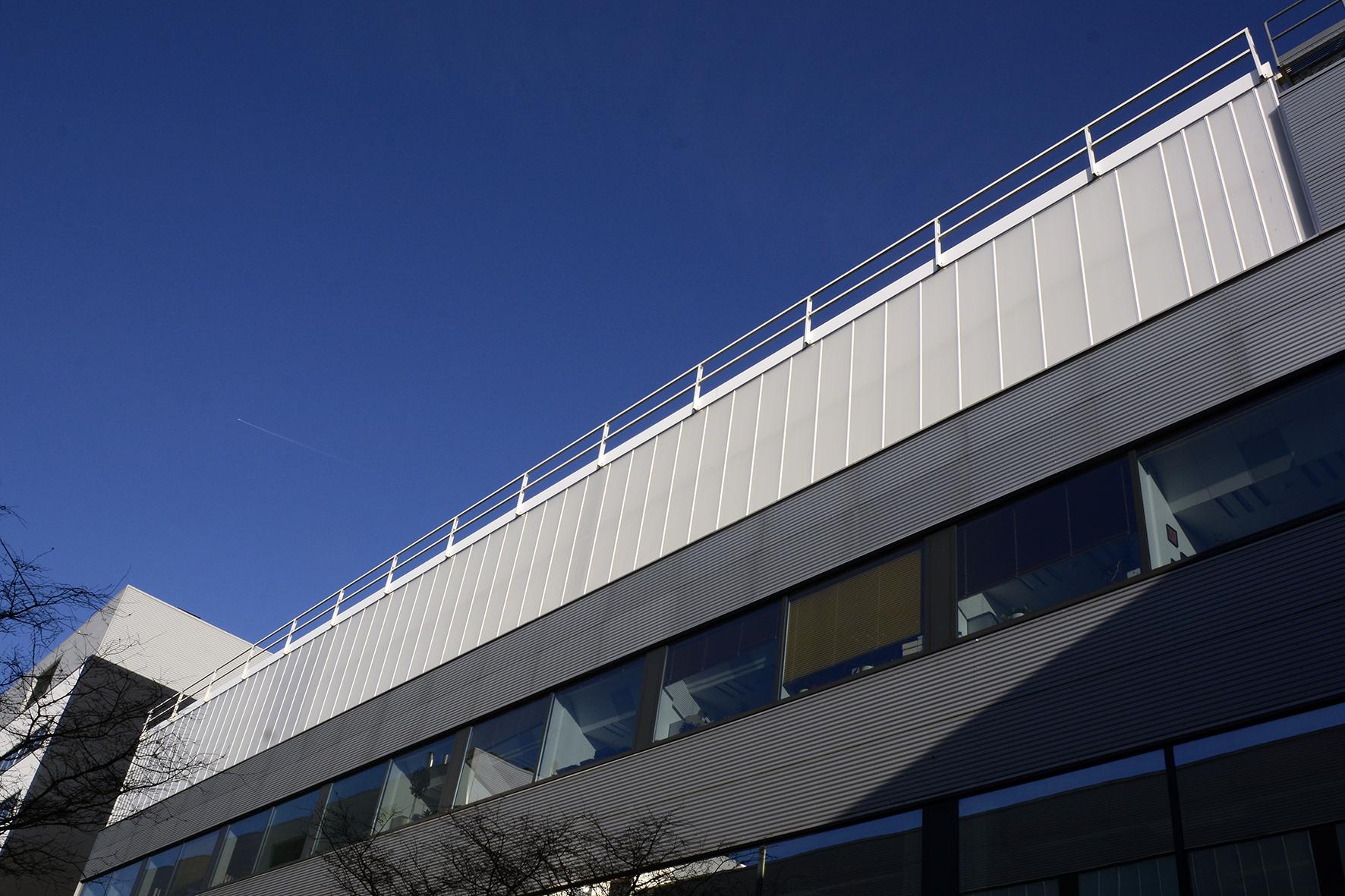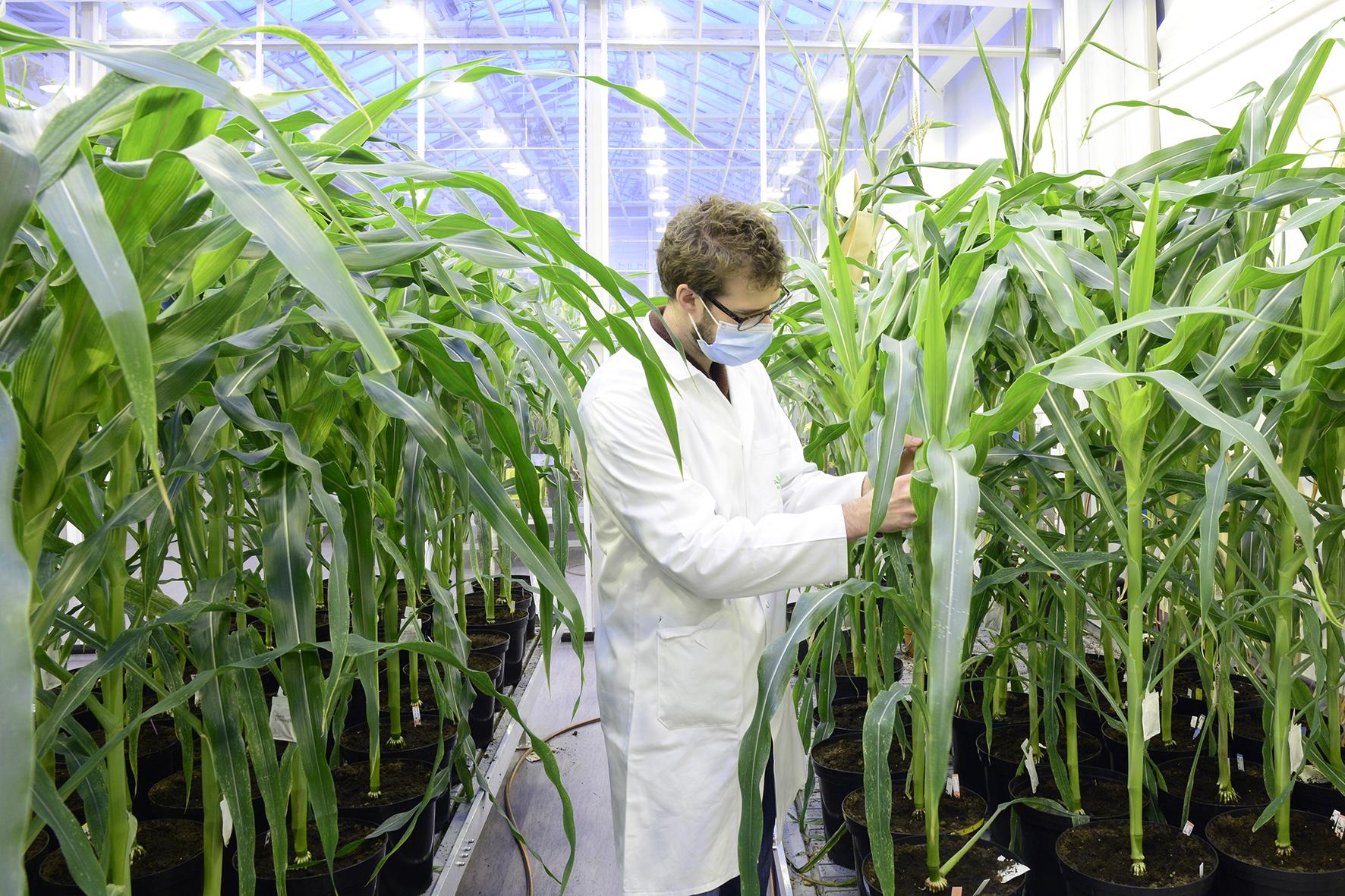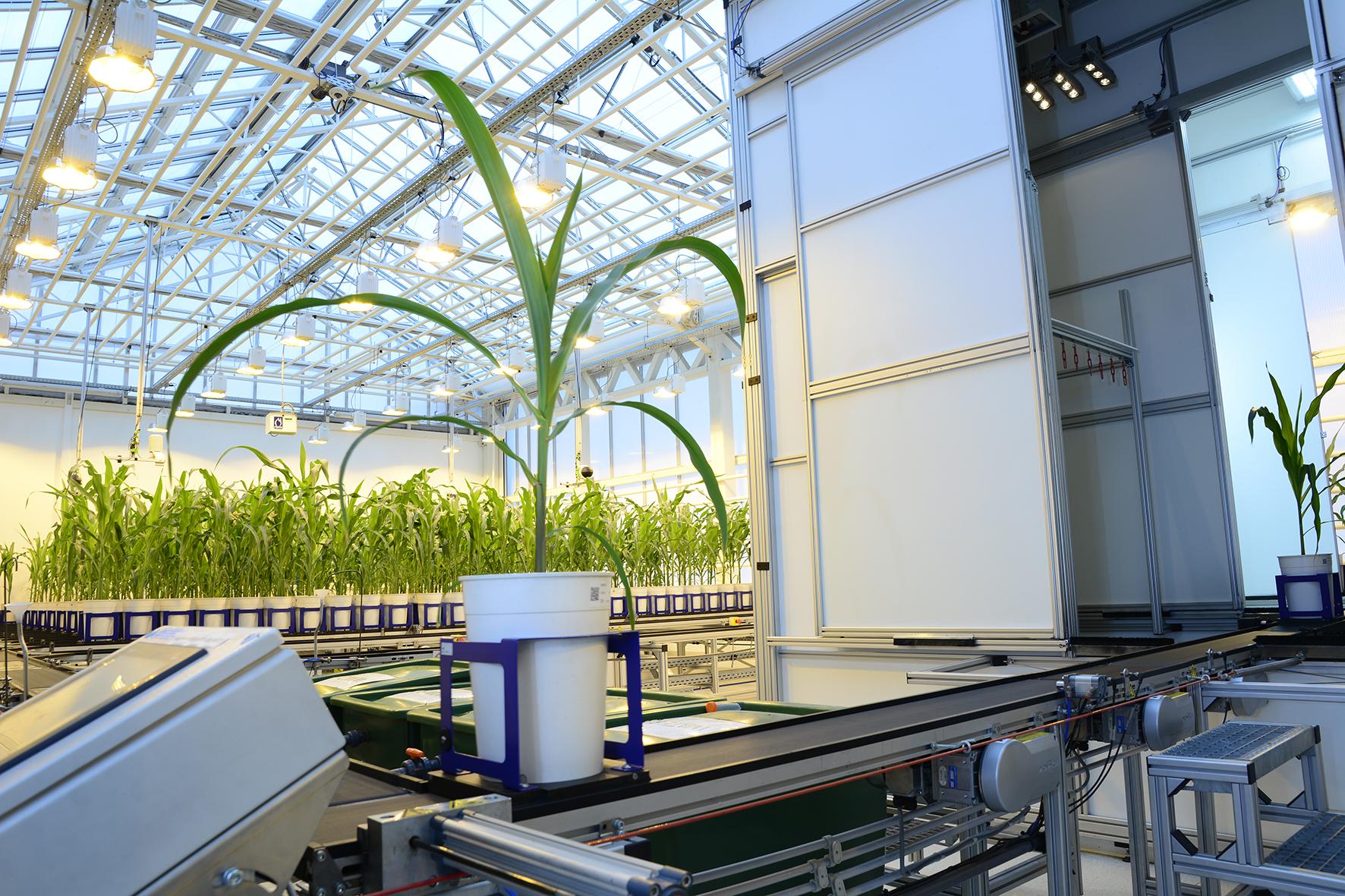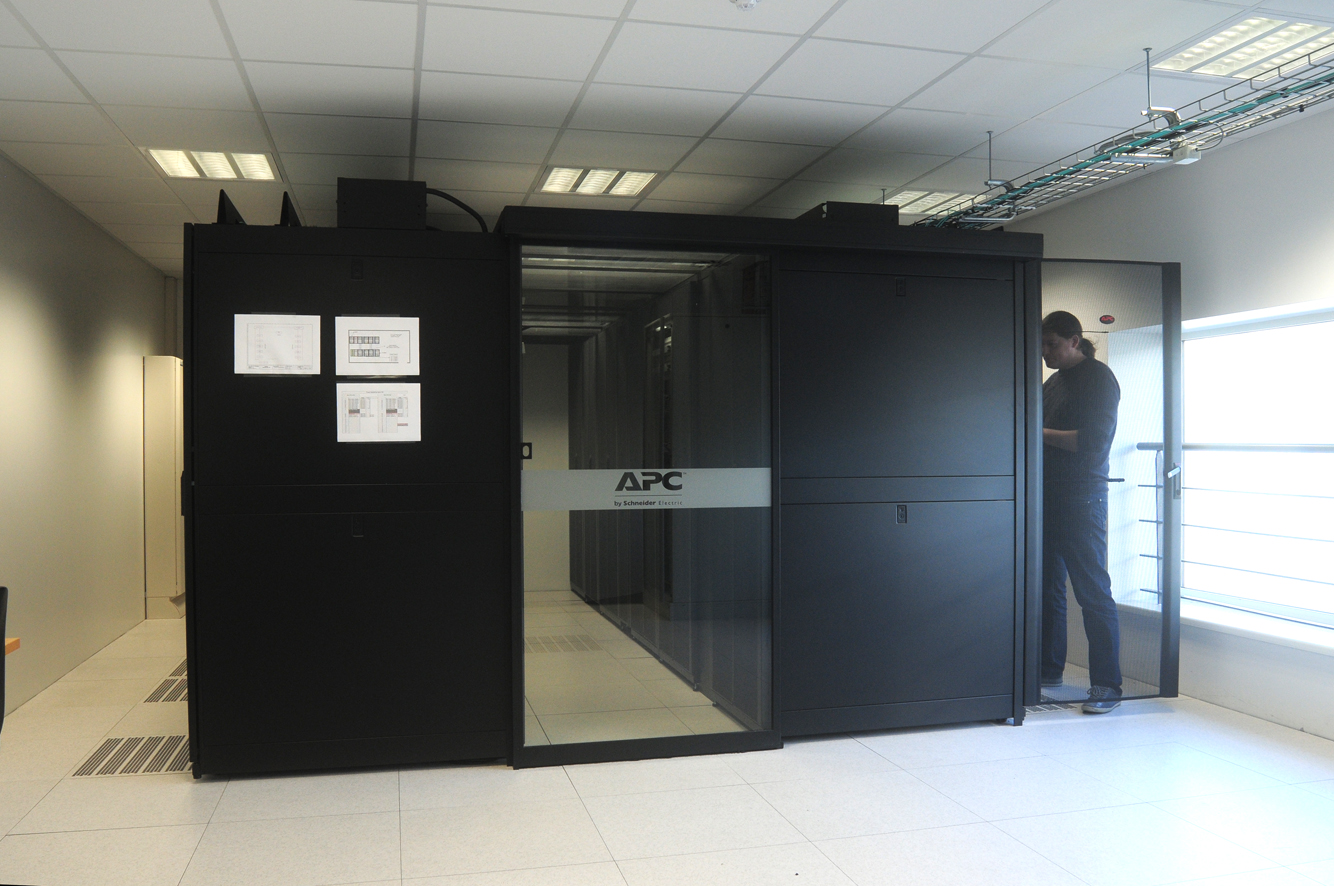
Building
The research building hosts two research departments, i.e. Plant Systems Biology (east wing) and Inflammation Research Center (west wing). Covering a total surface area of 24,405 m², the structure comprises a spacious main building, two laboratory wings separated by a garden, and a half-open parking garage. In addition to the general reception area and offices, the front building contains a seminar room for 200 persons, a library, and a cafeteria. The two lab wings, each 36 meters long and three stories high, house the research departments with approximately 15 lab units each providing work space for 12 people. Greenhouses are located on top of the east wing. Central service units are used for shared research equipment. This new infrastructure greatly facilitates efficient scientific research.

Growth Rooms
To facilitate high-quality plant growth experiments, the Center for Plant Systems Biology is equipped with state-of-the-art growth facilities. Two modern greenhouses (700 and 760 m²) are prominently located on the roof of the east wing of the building. Several compartments are fitted with automatic watering systems that allow optimal watering regimes. The climate in the compartments is independently controlled. Besides heating and ventilation, the climate system encompasses humidification and assimilation lights to ensure optimal growth conditions for a range of species year round. Inside, 20 additional plant growth chambers of 10 to 18 m² provide a wide range of reproducible and uniform growth conditions. Adjacent to the greenhouse and growth chambers, there are rooms for preparation, analysis and harvesting of material. Furthermore, six in-vitro tissue culture rooms of 19 m² each are furnished with three levels of cooled shelves, which are subdivided in sections in which the illumination levels can be adjusted independently.

Plant phenotyping installations
The VIB-UGent department hosts several plant phenotyping platforms for the automated imaging and the precise irrigation of plants. The combination of automated plant handling with non-invasive imaging methods yields a variety of physiological, morphological, and growth-related traits throughout plant development. Next to the study of different genotypes, the platforms also allow to investigate different soil types/growth substrates, multiple irrigation schemes, biological/chemical irrigation or spraying applications, and more. Depending on the species, traits, and developmental stage of interest the most suited platform is selected.
The phenotypic data generated by all platforms and corresponding metadata is managed by the in-house developed PIPPA software. PIPPA comprises a central database and web interface, which provides image and data visualization and analysis functionalities. (https://pippa.psb.ugent.be/).
Current installations are the result of an intensive collaboration between the research institute, VIB, and the machine building company, SMO. The phenotyping installations are being commercialized under the brand name WIWAM.
The plant phenotyping infrastructure at VIB is accessible for both industry and academia. Collaborations on this level typically originate from informal discussions, which define the goal, the design, and the planning of experiments. For further information or possible collaboration, contact: phenotyping@psb.vib-ugent.be

Computing
The Center for Plant Systems Biology is supporting a large Bioinformatics research group. The computing power needed to analyse the huge amount of genomic data is provided by a 16-compute nodes, 816-compute cores Linux cluster with a total of 4736 GB memory.
Biocomputing Linux cluster
- Dell servers and blades
- one dedicated master node, two submit nodes
- 16 compute nodes, 816 compute cores
- around 5,8 GB memory per compute core
- Centos 7 and son of grid engine 8.1.3
- Tiered Big Data storage on scale-out platforms, NGS scratch and NGS source data